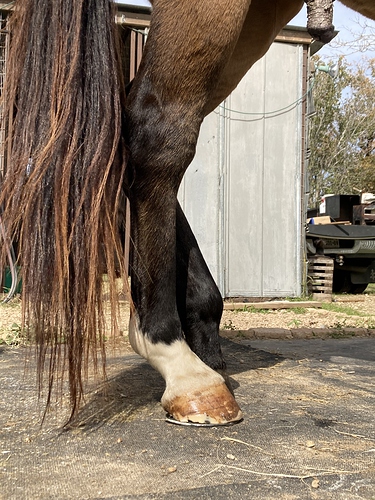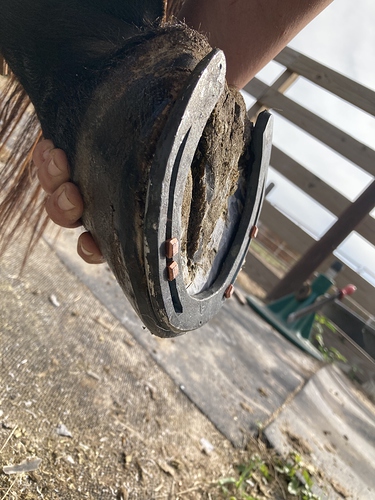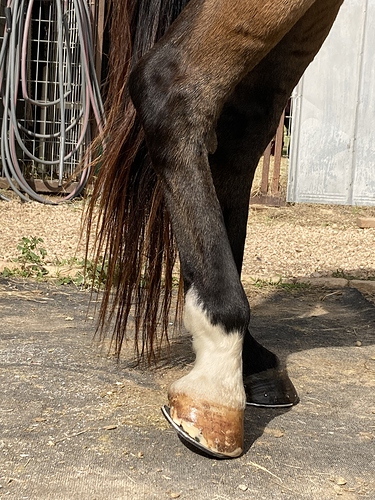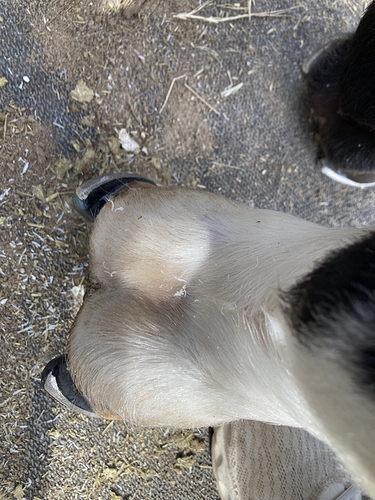My 5 year old ISH was diagnosed with Proximal Suspensory Desmitis in October after dealing with NQR for 2 years. He has this in his hind legs secondary to conformation due to straight hocks. We’ve followed the vets protocol to a T and it’s just not panning out so I’m trying to prepare for what’s coming next.
He had a round of shockwave, 7 doses of adequan, PRP, from barefoot to shod with suspensory shoes, stall rest with hand walking for a month. Cleared to do 2 weeks of riding at the walk and to start adding trot after that 2 weeks. It came to start trotting and it hasn’t gone well. It’s almost like he has had zero veterinary intervention at all. Like we’ve done nothing. This is a super super good vet so seeing someone better is probably not an option because I do have the best already. This vet says he doesn’t “need” the surgery, but she also hasn’t told me outright that he can’t have it because of his straight hocks. So I’m wondering if it will be on the table later? If they’re going to say my horse is ineligible for surgery to correct this then I would hope they have an objective way to measure what horse qualifies and which horse doesn’t.
When I asked about the recurrence of lameness symptoms she said she would consider adding muscle relaxers over previcox because she doesn’t want him feeling so good that he hurts himself more.
This wasn’t the result of any specific injury, it’s always been like this. The more he’s ridden the better he goes. As this was explained to me, PSD is considered a repetitive stress injury, so it makes no sense to me that he would improve with more work and decline in less work. He can’t add trot to his walks because he is super stiff in his back, protects it at all costs, has zero range of motion in his back and right hind, he will throw out these little hops, crow hops, swish his tail, throw his head, feel super front end lame,like throwing his front end out in front of himself because he can’t use his hind end appropriately. If these symptoms resolve after a few weeks of consistent w/t/c then doesn’t it make sense that it would be something else? I would think with consistent full work that his legs/suspensory would hurt worse but it seems to be the opposite.
At his one month recheck he jogged sound, and the lameness locator said all lameness had resolved and was no longer present from a month ago. Which is why we got the go ahead to continue. The vet was super optimistic about his prognosis.
Since I’ve shown her 2 videos of what’s going on she told me to back down to just a minute of trot but I can’t even get that so we’ve just been walking. The soonest I can get back in would be around the 12th of January.
So I’m here to ask the hive what else should I be looking for? The lameness exam that diagnosed him with this issue didn’t continue to investigate once the nerve blocks told them to ultrasound the suspensory area. I feel like there has to be something higher up. Between the LS/SI area down to the suspensories. In his regular body work/chiro sessions his right hip is always more forward than his left and he always cocks his right hind.
I’m wondering if his suspensory issues aren’t from his
conformation at all but something in his back. Ever since he was started he had problems at the canter that were dismissed as strength issues or him being young. I don’t think he’s ever been sound, at least for me to be able to tell the difference. When he’s in regular work and fit, the undesirable behavior like bucking, rearing, crow hopping, pig rooting, all seem to disappear until you put him in an emotional situation like a show environment. Then he’s right back to being locked up in his back and acting out. Otherwise the only thing you’d be able to occasionally notice is the lack of range of motion his right hind has. The arc is more flat and restricted, doesnt track up like the left hind, and he plaits or rope walks with the right hind.
Other things of note: he can’t poop and walk at the same time. He does phenomenal in dressage but is not competitive in stadium because he continually knocks rails with his hind legs. He has zero confidence in cross country and he acts out especially when it comes to this. He’s very talented. Was bred for this job. He is strong and stout. I just think he’s so used to his body failing him in one way or another that he’s worried. His plantar angle in his hind feet was slightly positive, and I’m aware of the correlation of more positive angles and better outcomes for this.
This vet is a 3 hour drive away. What am I supposed to say about all of this? Is it expected to fail a rehab plan before investigating further? Am I to settle for muscle relaxers in this case? I’m really interested in what she’s going to say.


 :dash:
:dash:


